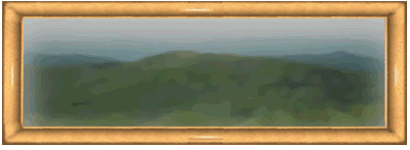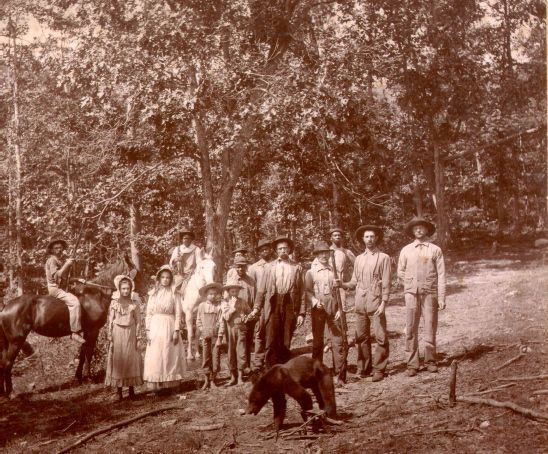
Submitted by June Mitchell, ajunemitchell@insight.rr.com
The following story was originally published in the Rockingham County Valley Banner November 13, 1997. The original photo which accompanied the story, taken in 1917, is in the possession of June Mitchell's relatives.
Fading Images
By Casey Bilhimer
Hunting—An east Rockingham tradition
|
Hunting has been a way of life in the Shenandoah Valley since native American tribes battled over rights to the plentiful hunting grounds. Hunting was a means of survival also for the early area pioneers who found ample numbers among the large game animals including bear, buffalo, deer, elk, mountain lion and wolves. Overhunting and the flight of game to safer havens, however, soon depleted the buffalo, elk, mountain lion and wolf. Game birds also were sought by hunters for food, but sport hunting also was poplular. Trophy hunters eager for bragging rights killed American bald eagles, which often sported seven-foot wing spans. Sport shooting almost wiped out the species on the East Coast which now is protected by government regulations. Government limits on game animals did not exist until early in this century, and the numbers of game taken by individual hunters are astounding in comparison with today's hunters. James Todd reportedly killed 2,700 deer with a muzzle-loading rifle in his lifetime. In February 1880, seven bears reportedly were shot in the Massanutten Peak area alone. The following January, Samuel Smith was said to have killed a bear which weighed about 300 pounds field-dressed. In 1890, Wallace Minnick reportedly bagged 13 bear, |
some of which weighed more than 300 pounds each. During the next hunting season, A.M.Turner reportedly killed 10 black bear, one of [which] weighed about 500 pounds, then sold the skins for $20. Eventually, the bear were virtually hunted out, as evident during the 1922-23 hunting season when only 30 bear were reportedly killed in Rockingham County. When the government designated land for national parks and forests throughout western Virginia in the 1920's and 30's, the once overhunted game animals that lived in these protected areas began a resurgence—particularly the deer population. Today even the occasional mountian lion is reportedly sighted—but the sightings are rare. The success of controlled hunting was evident just two decades ago when Elkton hunter Russell Breeden bagged a 580 pound bruin. Hunting remains one of the region's most popular sports, but the original objective of hunting for survival has almost evaporated. However, without regulated hunting, wild animal populations could increase to the point of annoyance—to farmers wanting to protect their crops and drivers finding them a hazard on the roadways—or starvation. On the other hand, overhunting could easily wipe out the existence of wildlife native to the area--denizens of the valley long before any European got a peek at Massanutten. |

Left to right, 1st. row: Lena Sellers, Ida Rion, Roy Sellers, John Sellers, Charles Rion, Erman Shifflett, Charles Sellers, Will Adams, second row unknown.
I was working on a scrapbook for old photo's of my Mothers family today, she was a Rion from Elkton and married a Shifflett, and I found this picture that I thought you might be interested in it. The Charles Rion is my grandfather's brother, but there is a Shifflett in it too.—June
This page is part of our
section of the Shiflet Family Genealogy Website and is maintained by:
Julia Crosswell / Fort Worth, TX /
Bob Klein / Pasadena, MD /